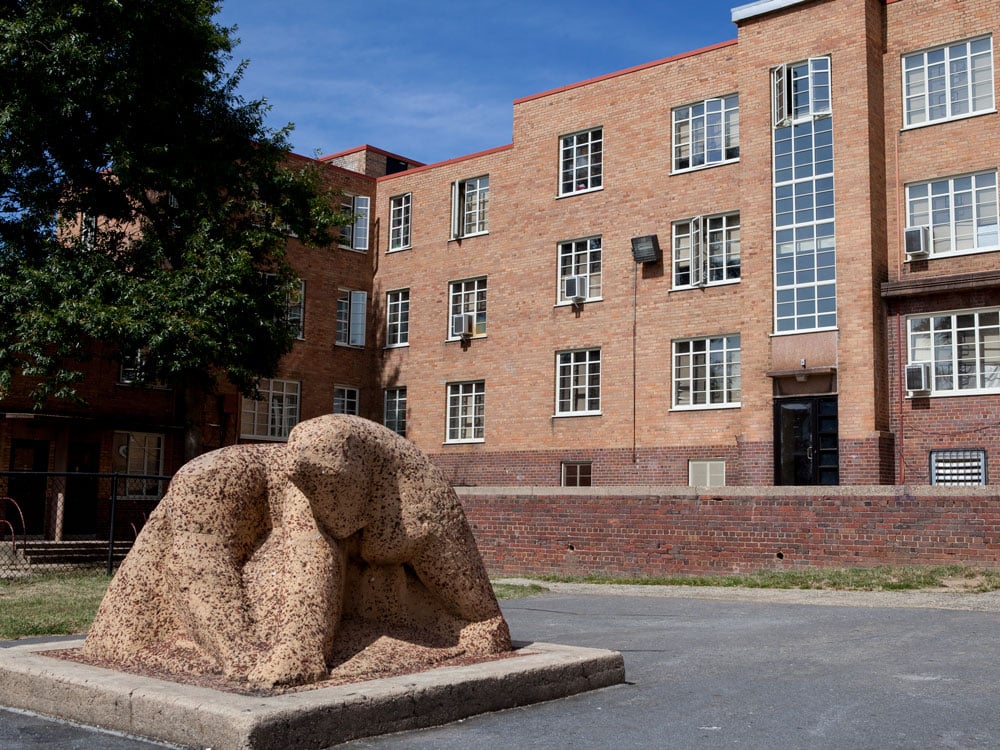English Language Arts Lesson | 10 Homes
English Language Arts Lesson
Genre Writing: Historical Fiction (based on Langston Terrace Dwellings)

Overview
In this lesson, students will learn why Langston Terrace Dwellings—the first federally financed public housing project in Washington, D.C.—was so successful. They will read an essay written by former resident Eloise Greenfield as well as excerpts from a 1909 book that described living conditions in tenements and shanties. Later, students will write a journal entry from the point of view of someone moving into Langston Terrace Dwellings in the 1930s.
Grades: 6 – 12
Time: 2 periods
Standards
This lesson addresses selected themes from the Common Core English Language Arts Standards
- Reading Literature: Determine a theme or central idea of a text and how it is conveyed through particular details; provide a summary of the text distinct from personal opinions or judgments.
- Craft and Structure: Explain how an author develops the point of view of the narrator or speaker in a text.
- Writing Literacy: Write narratives to develop real or imagined experiences or events using effective technique, relevant descriptive details, and well-structured event sequences.
Preparation
To prepare to teach this lesson, teachers should:
- Watch the Langston Terrace Dwellings segment from the PBS special 10 Homes that Changed America, on DVD or online.
- Review the lesson plan.
- Download and print copies of the Venn Diagram worksheet and the textual analysis worksheet.
- Download and print copies of the photos of tenements and Langston Terrace Dwellings.
- Download and print copies of the Eloise Greenfield essay about moving into the Langston Terrace Dwellings.
- Download and print copies of p. 201 - 205 of the book Neglected Neighbors: Stories of Life in the Alleys, Tenements, and Shanties by Charles Frederick and Eugenia Winston Weller.
Lesson
Materials:
- Copies of Venn Diagram, textual analysis worksheet, Eloise Greenfield essay, photos of tenement and Langston Terrace Dwelling, p. 201 - 205 of Neglected Neighbors.
Period 1
- Show the class the clip from 10 Homes That Changed America about Langston Terrace Dwellings. Ask students to respond the clip. Why were these apartments important to people? How did the design change people’s lives? What were some of the design characteristics that made an apartment in Langston Terrace better than living in a shanty or tenement? (Answers might include better light and air, the courtyards created a sense of community, and better sanitation.)
- Distribute the Venn diagram and the historic images of Langston Terrace and a typical tenement. Students work through the Venn diagram and share their responses.
- Distribute copies of the Eloise Greenfield essay about moving into Langston Terrace Dwellings and the excerpt from Neglected Neighbors. Ask students to recall Ms. Greenfield from the video clip and to share what they remember about her. Tell students that during the next class, they will analyze the two texts.
Period 2
- Read Eloise Greenfield’s essay about moving into Langston Terrace Dwellings and the excerpt from Neglected Neighbors. Divide students into groups. Students work in groups to answer the questions on the worksheet about the essay and book excerpt. Share students’ answers.
- Tell students that they are going to write a diary or journal entry imagining that their family is moving into Langston Terrace Dwellings in the 1930s. How will this move change their lives? What will it mean to them on a daily basis? Students may start writing in class, and if time runs out, they may finish for homework.
- Students share their journal essays or they hand them in as an assignment.
Additional Resources
Books
- Public Housing and Urban Renewal: An Analysis of Federal-Local Relations by Richard D. Bingham
- Public Housing that Worked: New York in the Twentieth Century by Nicholas Dagen Bloom
- Childtimes, A Three Generation Memoir by Eloise Greenfield
- Making Modern Homes: A History of Langston Terrace Dwellings, A New Deal Housing Program in Washington, D.C. by Kelly Anne Quinn
- A New System for Public Housing: Salvaging a National Resource by Raymond J. Struyk
- The Politics of Public Housing: Black Women’s Struggles Against Urban Inequality by Rhonda Y. Williams
Online Sources
- Web page about Langston Terrace Dwellings with historic photos
www.paulrwilliamsproject.org/gallery/langston-terrace-washington-dc/ - Public Housing
www.hud.gov
For Further Study
This Art lesson can be extended to other subjects or paired with other 10 Homes that Changed America lessons to create the following interdisciplinary connections:
- Art: Students create a visual Venn diagram that compares Langston Terrace with a tenement or shanty. Instead of using words in their Venn diagram, they use drawings or images cut out of a magazine.
- Science: Why is light and air important in buildings? Students research why so many of the improvements in public housing projects revolved around the access to light and air.
- Mathematics: Using the site plan of Langston Terrace, students calculate the percentage open space in the complex.
- Social Studies: Students debate the role the federal government should or should not play in housing.

